#Selma george wallace
Text

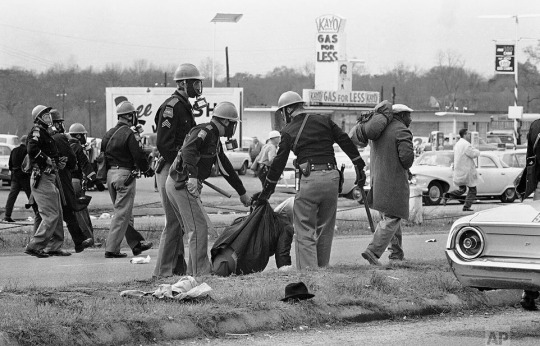



Today In History
The first Selma to Montgomery march began on Sunday, March 7, led by SNCC chairman John Lewis and the Reverend Hosea Williams of SCLC.
Predating the march, Reverend C.T. Vivian led a peaceful march to the courthouse in Marion, Alabama on February 18, 1965, to protest the arrest of DCVL member James Orange. On the way to the courthouse, Alabama state troopers attacked the marchers, shooting Jimmie Lee Jackson in the process. Jackson died eight days later, prompting James Bevel of SCLC to call for a march from Selma to Montgomery to speak with Governor George Wallace about Jimmie Lee Jackson’s death.
The march proceeded without any interruptions until the protesters arrived at the Edmund Pettus Bridge where they were met with violence by Alabama law enforcement officials. Amelia Boynton was beaten unconscious. John Lewis suffered a skull fracture from the attack, and later mentioned he thought he was going to die that day. After this terrifying ordeal was over, more than 60 marchers would be injured. This day would become known as “Bloody Sunday.”
CARTER™️ Magazine
#bloody sunday#salma#john lewis#carter magazine#historyandhiphop365#carter#wherehistoryandhiphopmeet#history#cartermagazine#today in history#staywoke#blackhistory#blackhistorymonth
42 notes
·
View notes
Text
Tim Roth Roles Ranked (according to me)
1. Freddy Newendyke/Mr Orange (Reservoir Dogs)
2. Guildenstern (Rosencrantz and Guildenstern are Dead)
3. Ringo/Pumpkin (Pulp Fiction)
4. Ted the Bellhop (Four Rooms)
5. Emil Blonsky (She-Hulk TV version)
6. Oswald Mobray/English Pete Hicox (The Hateful Eight)
7. Governor of Alabama George Wallace (Selma)
8. Gregor Samsa (The Metamorphosis)
9. Danny Boodmam TD Lemon Nineteen Hundred (The Legend of 1900)
10. Archibald Cunningham (Rob Roy)
11. Peter Edgar (Luce)
12. Gary Hutchens (Twin Peaks: the Return)
13. Joshua Shapira (Little Odessa)
14. Cal Lightman (Lie to Me)
15. Emil Blonsky (Incredible Hulk movie version)
6 notes
·
View notes
Text
0 notes
Text




IMAGENES Y DATOS INTERESANTES DEL DIA 7 DE MARZO DE 2024
Día Mundial de los Cereales, Día Internacional en Recuerdo de los Oficiales de Policía Caídos, Año Internacional de los Camélidos.
San Rufino y Santa Perpetua.
Tal día como hoy en el año 1966
En España, Manuel Fraga, Ministro de Información y Turismo, se baña en Palomares con el embajador de Estados Unidos para hacer creer que no existe riesgo de contaminación radioactiva, a pesar de las bombas termonucleares que han caído en la playa cuando en enero dos bombarderos norteamericanos procedentes de Turquía y Georgia, cargados con cuatro de estas armas cada uno, realizaban un vuelo rutinario sobre la península ibérica y, al tener que repostar para continuar volando rumbo a Estados Unidos, uno de ellos, que llegó antes de lo previsto al encuentro, colisionó con el avión cisterna, incendiándose y dejando caer cuatro de estas bombas de una potencia 75 veces superior a las lanzadas sobre las ciudades Hiroshima y Nagasaki a finales de la II Guerra Mundial. (Hace 58 años)
1965
En Alabama (EE.UU.) la Southern Christian Leadership Conference dirige una marcha pacifista en Selma, para protestar contra las injustas pruebas de inscripción para poder votar. Bajo órdenes del gobernador George Wallace, oficiales de la policía del Estado y agentes del condado de Dallas atacan brutalmente a cientos de manifestantes utilizando porras y gases lacrimógenos, en lo que tristemente se conocerá como el "Domingo Sangriento", hecho que será determinante en la historia de los derechos civiles del mencionado país. (Hace 59 años)
1885
Se firma el protocolo en que Gran Bretaña y Alemania reconocen la soberanía de España sobre el archipiélago de Joló, en las Filipinas. España perderá las Filipinas en 1898, año que pasará a formar parte de la crónica negra de la historia española como "desastre del 98". (Hace 139 años)
1820
Tras el estallido revolucionario liberal producido en España, iniciado en gran medida por el teniente coronel Rafael del Riego, el rey Fernando VII se ve obligado a firmar y acatar la Constitución de 1812. El absolutismo, tras seis años de lucha con los liberales, pierde la partida. (Hace 204 años)
321
Desde Constantinopla, actual Turquía, Constantino I el Grande,para reforzar su autoridad imperial a efectos administrativos frente a Licinio, decreta mediante edicto que el "dies solis" (actual domingo) será día festivo, entrando gradualmente en las tradiciones de la Iglesia, sustituyendo así al sábado, hasta entonces el más guardado por los cristianos. El 3 de noviembre de 383, otro emperador, Teodosio I, establecerá que el día de descanso, el "dies solis", pasará llamarse "dies dominicus". (Hace 1703 años)
161
En Roma, al morir Antonino Pío, resulta proclamado emperador su hijo adoptivo Marco Aurelio Antonino, filósofo estoico y último representante de la grandeza de Roma. Durante su reinado tendrá que hacer frente a varias revueltas. Buen estadista y guerrero por obligación, sobre todo será el emperador y hombre más íntegro de su época. Subordinará la filosofía al cumplimiento de una ética y será el primero en manifestar que la muerte no tiene nada de gloriosa sino que más bien significa caer en el olvido. (Hace 1863 años)
0 notes
Text
AMERICAN HISTORY NOTES 11/9

9 black students going to class at Little Rock high on September 5, 1927
They were met with violence
Mayor of Little Rock had personally contacted Eisenhower (president) and said he wanted military help because the governor asked for the national guard to prevent any black people into entering
The army trumps the national guard
Orville declares he will fight segregation anywhere he goes and will not allow for racism in any state (against his power)
George C Wallace, governor of Alabama, awful man
Doctors did not need to tell women what was wrong with them, but would tell the men
Irene Wallace had cancer, but George didn't tell her. She ended up figuring out herself and was upset at him, which confused him. DUMBASS
George C Wallace stood on the balcony of Alabama and that balcony is a famous location
He declared a speech of segregation now and forever!!!!!!
He said the same thing over and over again
That's all he said for the 1960's
Later in life, he came to Jesus moment, and apologized publicly towards the end of life for being racist and tried to make amends with African Americans in Alabama. Some even forgave him.
In the end he tried to make things right, but the consequences remained
Emmett Till, 1941-1955 (only 14 years old), he was beaten and then killed by two men after apparently 'whistling' at someone's wife. Everyone knew who it was. The FBI knew who did it.
The two men were arrested and were found not guilty from an all white court. They laughed and joked as they left about doing that to a fourteen black boy.
He paid the price for white supremacy and his mother insisted on an open casket for the world to see
White America finally went what is going down on the South: What is this, why is this happening?
FUCK THE KILLERS RAHHHHHHHHHHH
This dumb bitch admitted he never whistled and was respectful. Fucking dumb whore THAT DONT CHANGE SHIT
Reverend Dr. Martin Luther King, 1929-1968
Rosa Parks, 1913-1992
Started the bus boycott
Refused to give up her seat and was arrested
This wasn't a spontaneous thing, she had volunteered to do this and worked with the leadership of the Civil Rights movement to do this
Bus boycott continued for 1 year and 10 days and not one person got on the Montgomery bus and amazingly, a lot of white people too
Bomb in church on Sunday (hoping to hurt or kill people)
According to MLK, one of the most vicious crimes that's happened in the Civil Rights Era
Once again, everyone knew who did it, but this time they did nothing
No one was arrested even till 1977
The bomb killed 4 girls under the age of 12 and injured 22 more
Edmund Pettis Bridge, Selma, AL
By 1965, the right to vote was something the South didn't like and the bridge was used to get to the polls by African Americans
Selma had a 35% black population
By '83 of that year, people started a confirmation to 400 unarmed black people
Black man was even shot in the gut and died
MLK and others planned a peaceful march and had to crossed this bridge
Bloody Sunday, March 7 on 1965
Armed troopers attacked peaceful demonstrators who were walking across the bridge in numbers. Started in the sidewalks, then moved to the street when there were no cars, but they couldn't see what was waiting for them till they reached the top of the bridge. They saw the police and upon seeing them, were terrified.
Asked one if they knew how to swim
They continued and then were beat and shot by the police
Major networks were there too, therefore leading to televised footage of this
The marchers were bloodied and were severely injured
Worked against the plan of George C. Wallace and the troopers
17 marchers were hospitalized
April 1968, Lorraine Hotel, Memphis, TN
One of MLK most impressive speech, the Temple of the Mountain, and he was in Memphis when he gave the speech
He concluded he knew he was going to die (many death threats and most were credible)
He knew his time was limited
Its the poor white people
Some of the why us and not you?
If you're poor, you're constantly attacked and made to feel less human. But it doesn't excuse shit bitch
Two of the worst schools in Boston because they were the poorest
Football season got canceled because parents were throwing rocks due to black students
Black and white students had to enter through different entrances
Restore Our Alienated Rights (ROAR), this didn't include black people
0 notes
Photo

EVERYBODY THINKS THE BLACK PANTHERS STARTED IN OAKLAND 🤦🏾♂️ HATERS WILL SAY ITS PHOTOSHOP BUT YOU CAN’T #PHOTOSHOP ALABAMA INTO HISTORY‼️The Lowndes County Freedom Organization (LCFO), also known as the Lowndes County Freedom Party (LCFP) or Black Panther party, was founded during 1965 in Lowndes County, Alabama. The independent third party was formed by local African-American citizens led by John Hulett, and by staff members of the Student Nonviolent Coordinating Committee (SNCC) under the leadership of Stokely Carmichael. On March 23, 1965, as the march from Selma to Montgomery took place, Carmichael and some in SNCC who were participants declined to continue marching after reaching Lowndes County and decided to instead stop and talk with local residents. After word spread that Carmichael avoided arrest from two officers who ordered him to leave a school where he was registering voters after he challenged them to do so, Carmichael and the other SNCC activists who stayed with him in the county were inspired to create the LCFO with Hulett in the state. As the Voting Rights Act of 1965 allowed African Americans to register to vote, the objective of the party was to register African Americans in a county that was 80% black and none were registered to vote. Local residents and SNCC staff members decided to avoid joining the Alabama Democratic party because the state party was led by segregationist Governor George Wallace and employed the slogan "White Supremacy" represented by an image of a white rooster. Due to high rates of illiteracy among the black residents, an image of a black panther was adopted to identify party members of LCFO in contrast to members of the all-white Democratic party represented by a white rooster. SHOUTOUT @karlousm @chrisjonesfunny on the AT THE END OF THE DAY TOUR @nuface was there what you waiting on to see the show?!!?!? 🤷🏾♂️ #nufacewasthere #icantmakethisup #blackhistorymonth #blackhistory #revolutionary #history #ancestors #picoftheday #photo #photooftheday #pictureoftheday #blackandwhite #blackandwhitephotography #adobephotoshop #photomanipulation #knowledgeispower 👨🏾💻 @vipgoodie (at Lowndes County, Alabama) https://www.instagram.com/p/CpNO8dggZdS/?igshid=NGJjMDIxMWI=
#photoshop#nufacewasthere#icantmakethisup#blackhistorymonth#blackhistory#revolutionary#history#ancestors#picoftheday#photo#photooftheday#pictureoftheday#blackandwhite#blackandwhitephotography#adobephotoshop#photomanipulation#knowledgeispower
0 notes
Text
Continuation:
President Lyndon B. Johnson signed into law the Civil Rights Act of 1964, legislation introduced by President John F. Kennedy before to his killing on July 2, 1964. The signing was observed by King and other civil rights advocates. The law ensured equitable employment for everyone, restricted the use of voter literacy tests, and empowered federal officials to ensure that public facilities were integrated. The civil rights movement in Alabama took an especially violent turn on March 7, 1965, when 600 peaceful demonstrators marched from Selma to Montgomery to protest the death of Black civil rights activist Jimmie Lee Jackson by a white police officer and to encourage legislation to enforce the 15th amendment. Protesters were stopped as they approached the Edmund Pettus Bridge by Alabama state and municipal police deployed by Alabama governor George C. Wallace, a staunch opponent of integration. Refusing to back down, demonstrators pressed forward and were violently battered and teargassed by police, resulting in the hospitalisation of hundreds of protesters. The whole incident was shown on television, and it became known as "Bloody Sunday." Some protesters intended to react with violence, but King advocated for nonviolent protests and finally won government protection for another march.
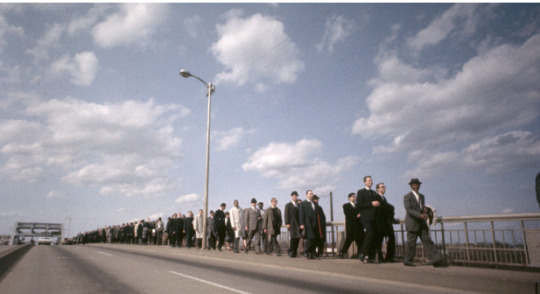
On August 6, 1965, President Johnson signed the Voting Rights Act into law, expanding on the Civil Rights Act of 1964. The new legislation prohibited all voter literacy tests and made federal examiners available in some voting areas. It also gave the attorney general the authority to challenge state and municipal poll taxes. As a result, in Harper v. Virginia State Board of Elections in 1966, poll taxes were deemed unlawful. Part of the Act was repealed decades later, in 2013, when the Supreme Court declared that Section 4(b) of the Voting Rights Act was unconstitutional, ruling that the restrictions imposed on select states and federal oversight of states' voting methods were out of date. In the late 1960s, the civil rights movement had devastating implications for two of its leaders. Malcolm X, former Nation of Islam leader and creator of the Organization of Afro-American Unity, was killed during a demonstration on February 21, 1965. Martin Luther King Jr., a civil rights activist and Nobel Peace Prize winner, was killed on the balcony of his hotel room on April 4, 1968. Looting and rioting ensued, placing even greater pressure on the Johnson administration to pass new civil rights legislation.
youtube
The Fair Housing Act was signed into law on April 11, 1968, only days after Martin Luther King Jr. was assassinated. It prohibited housing discrimination on the basis of race, gender, national origin, or religion. It was also the final piece of legislation passed during the civil rights period. For Black Americans, the civil rights struggle was both liberating and perilous. Civil rights activists and numerous demonstrators of all races worked together to pass laws that ended segregation, Black voting suppression, and discriminatory job and housing policies.
Referencing:
History.com Editors. (2022). Civil Rights Movement. [Online]. History. Last Updated: 18 January 2022. Available at: https://www.history.com/topics/black-history/civil-rights-movement [Accessed 15 December 2022].
A Brief History of Jim Crow. Constitutional Rights Foundation.
Civil Rights Act of 1957. Civil Rights Digital Library.
Document for June 25th: Executive Order 8802: Prohibition of Discrimination in the Defense Industry. National Archives.
Greensboro Lunch Counter Sit-In. African American Odyssey.
Little Rock School Desegregation (1957). The Martin Luther King, Jr. Research and Education Institute Stanford.
Martin Luther King, Jr. and the Global Freedom Struggle. The Martin Luther King, Jr. Research and Education Institute Stanford.
Rosa Marie Parks Biography. Rosa and Raymond Parks.
Selma, Alabama, (Bloody Sunday March 7, 1965). BlackPast.org.
The Civil Rights Movement (1919-1960s). National Humanities Center.
The Little Rock Nine. National Park Service U.S. Department of the Interior: Little Rock Central High School National Historic Site.
Turning Point: World War II. Virginia Historical Society.
0 notes
Text
Selma was such a good movie and it's criminal how the industry shafted that movie and how its reach seems to have been diminished by the campaigns against it at the time. More than just being a great movie, it would be helpful for today's activists to see the political and media maneuvering portrayed in that film. Particularly for people who think Nancy Pelosi and Chuck Schumer and the women's March are good examples of actual resistance and change.
3 notes
·
View notes
Photo

The Pittsburgh Courier, Pennsylvania, June 19, 1965
#1960s#history#civil rights#newspapers#midcentury#historic#vintage#1965#african american#racism#viola luizzo#james reeb#pennsylvania#pittsburgh#george wallace#selma to montgomery marches#segregation
108 notes
·
View notes
Photo
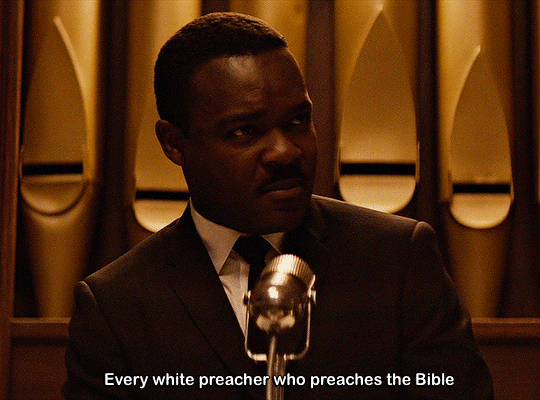
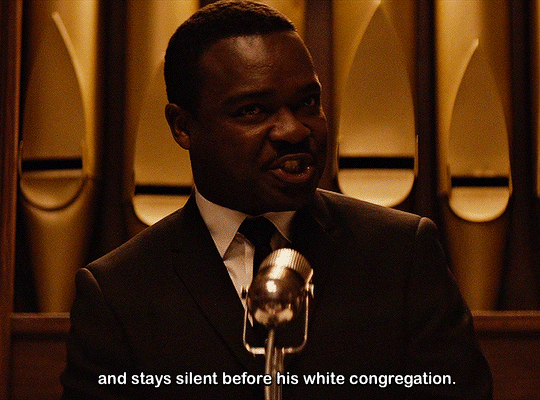
Who murdered Jimmie Lee Jackson? We know a state trooper was acting under the orders of George Wallace pointed the gun and pulled the trigger. But how many other fingers were on that trigger? Who murdered Jimmie Lee Jackson? Every white lawman who abuses the law to terrorize. Every white politician who feeds on prejudice and hatred.
SELMA (2014) dir. Ava DuVernay
#david oyelowo#mlk#mlk jr#martin luther king jr#martin luther king jr.#blm#black lives matter#social justice#stop police brutality#activist#dailyflicks#cinematv#cinemapix#fyeahmovies#my gifs
630 notes
·
View notes
Text


Nichols had a chance to test that premise soon after The Odd Couple opened, when May called him and told him they should go to Alabama to perform for the civil rights protesters who were marching from Selma to the state capital in Montgomery. The marches had been going on for two weeks, and the brutality with which state troopers and local racist militia had reacted was filling national newscasts. Nichols had been scheduled to leave for Hollywood to start preproduction on Who’s Afraid of Virginia Woolf? He called Ernest Lehman, who warned him to stay away from political controversy.
May didn’t ask for much, but when she did, she meant business. “I said to Elaine, ‘He won’t let me.’ And she said, ‘You’re going.’ So I had to go,” said Nichols. “Mike was aware of the violence, and he was a bit concerned,” says Steinem. “But I remember him deciding to go.”


In Alabama, Nichols, May, and the other celebrities who had traveled from New York and Los Angeles—Sammy Davis Jr., Harry Belafonte, Leonard Bernstein, James Baldwin, Shelley Winters, Anthony Perkins, Peter, Paul, and Mary—“were met by a guy,” Nichols recalled, “who gave us each a dime to call the FBI in case anything went wrong. Really? Calling the FBI from a pay phone? Is that the best way to be safe?” That night, on a makeshift outdoor stage in sweltering heat, Nichols and May, scripts still in hand, performed a version of their telephone sketch, this time about Governor George Wallace, played by Nichols, trying to get past a bored operator to reach President Johnson
- FROM CHAPTER TEN: Funniest Distance Between Two Points (1964-1965) of MIKE NICHOLS: A LIFE by Mark Harris
#watched the king documentary earlier and oh wow#elaine may forcing mike to come yes that's my activist queen right fucking there!!!!!!#elaine may#mike nichols#nichols and may#mike nichols: a life#mark harris#king: a filmed record... montgomery to memphis
13 notes
·
View notes
Video
undefined
tumblr
✨ John Lewis ✨
One of the "Big Six" leaders of the civil rights movement in the 1960s, John Lewis continued to fight for people's rights since joining Congress in 1987.
John Lewis, in full John Robert Lewis, (born February 21, 1940, near Troy, Alabama, U.S.—died July 17, 2020, Atlanta, Georgia), American civil rights leader and politician best known for his chairmanship of the Student Nonviolent Coordinating Committee (SNCC) and for leading the march that was halted by police violence on the Edmund Pettus Bridge in Selma, Alabama, in 1965, a landmark event in the history of the civil rights movement that became known as “Bloody Sunday.”

Lewis was the son of Alabama sharecroppers. He attended segregated schools and was encouraged by his parents not to challenge the inequities of the Jim Crow South. As a teenager, however, he was inspired by the courageous defiance of Rosa Parks and Martin Luther King, Jr., to whose attention Lewis came when he indicated his desire to desegregate Troy State College (now Troy University). Dissuaded from doing so by his parents, Lewis instead was educated in Nashville at the American Baptist Theological Institute and Fisk University (B.A. in religion and philosophy, 1967).
There Lewis undertook the study of nonviolent protest and became involved in sit-ins at lunch counters and other segregated public places. In 1961, while participating in the Freedom Rides that challenged the segregation of Southern interstate bus terminals, Lewis was beaten and arrested—experiences he would repeat often. In 1963 he was elected to replace Chuck McDew as the chairman of SNCC, a position he held until 1966, when he was succeeded by Stokely Carmichael, as the organization took a more-militant direction. Also in 1963 Lewis played a key role in the historic March on Washington. Indeed, by that point, Lewis, though still in his early 20s, had already become such a prominent figure that he was considered one of the civil rights movement’s “Big Six” leaders, along with King, James Farmer, A. Phillip Randolph, Roy Wilkins, and Whitney Young. In 1964 Lewis headed the SNCC’s efforts to register African American voters and organize communities in Mississippi during the Freedom Summer project.
On March 7, 1965, Lewis played a pivotal role in one the most important events in the history of the American civil rights movement when he and King lieutenant Hosea Williams led some 600 peaceful demonstrators on a march in support of voting rights that departed from Selma, with the capitol in Montgomery, Alabama, as its destination. At the beginning of the march, while still in Selma, as they attempted to cross the Edmund Pettus Bridge over the Alabama River, the protestors were confronted by a large force of sheriff’s deputies, state troopers, and deputized “possemen” (some on horseback) who had been authorized by Alabama’s segregationist governor George Wallace to “take whatever means necessary” to prevent the march. Given two minutes to disperse, the marchers were almost immediately set upon. They were quickly doused with tear gas, overrun by horses, and attacked with bullwhips and billy clubs. As a result of the brutal assault, more than 50 marchers were hospitalized, including Lewis, whose skull was fractured but who spoke to television reporters before going to the hospital, and called on Pres. Lyndon B. Johnson to take action in Alabama. Millions of American television viewers witnessed the event, which became known as “Bloody Sunday,” and within 48 hours demonstrations in support of the marchers had taken place in some 80 American cities. The resulting heightened awareness would contribute mightily to the passage of the landmark Voting Rights Act , which was signed into law by Johnson on August 6, 1965.

After leaving the SNCC, Lewis, who had made his home in Atlanta, remained active in the civil rights movement, most notably as the director of the Voter Education Project. In 1977 a fellow Georgian, Pres. Jimmy Carter, put Lewis in charge of ACTION, the umbrella federal volunteer agency that included the Peace Corps and Volunteers in Service to America (VISTA). Lewis entered elective office as an Atlanta city councilman in 1981 and in 1986 began representing a district that included Atlanta in the U.S. House of Representatives.
In addition to numerous other honours he received, Lewis was awarded the Martin Luther King Jr. Nonviolent Peace Prize in 1975, the John F. Kennedy Profile in Courage Award in 2001, and the National Association for the Advancement of Colored People’s (NAACP) Spingarn Medal in 2002. In 2011 he received the Presidential Medal of Freedom. His memoirs are Walking with the Wind (1998; cowritten with Michael D’Orso) and the March trilogy (2013, 2015, and 2016; all cowritten with Andrew Aydin and illustrated by Nate Powell), a graphic novel series for young adults that was based on Lewis’s experiences in the civil rights movement. The final installment in the series received numerous honours, including the National Book Award (2016), and Lewis and Aydin shared a Coretta Scott King Book Award (2017). The documentary John Lewis: Good Trouble (2020) chronicles his life and career.
youtube
In July 2020, after a battle with pancreatic cancer, Lewis died. Called the “conscience of Congress,” he became the first African American lawmaker to lie in state in the rotunda of the U.S. capitol. At his funeral at the Ebenezer Baptist Church in Atlanta (King’s home parish), Lewis was eulogized by Speaker of the House Nancy Pelosi, pioneer of nonviolent resistance James Lawson, and three former U.S. presidents: Bill Clinton, George W. Bush, and Barack Obama. Obama, for whom Lewis was an inspiration and a hero, called Lewis a man of “unbreakable perseverance” and said that he embodied “that most American of ideas— that idea that any of us ordinary people, without rank or wealth or title or fame, can somehow point out the imperfections of this nation and come together and challenge the status quo and decide that it is in our power to remake this country that we love until it more closely aligns with our highest ideals.”
At Lewis’s request, on the day of his funeral, The New York Times published a valedictory essay in which Lewis lauded the Black Lives Matter movement and provided marching orders for future activists, saying in part:
Though I may not be here with you, I urge you to answer the highest calling of your heart and stand up for what you truly believe. In my life I have done all I can to demonstrate that the way of peace, the way of love and nonviolence is the more excellent way. Now it is your turn to let freedom ring.
Want to support the Anti-Racist movement? Donate to the European Network Against Racism
Want to support them AND get custom t100 fanwork? Prompt us!
Submit your prompt request via the google form here, which will guide you step-by-step through the process of submitting a prompt. Don’t forget to tell us the prompt title when you submit! Check out our prompt ideas here ❣️
#black history month#bhm#blm#black lives matter#john lewis#civil rights movement#black excellence#t100#the 100#the 100 fandom#t100fic4blm#t100fic4bhm
38 notes
·
View notes
Text
Heather Cox Richardson:
March 7, 2021 (Sunday)
Black Americans outnumbered white Americans among the 29,500 people who lived in Selma, Alabama, in the 1960s, but the city’s voting rolls were 99% white. So, in 1963, Black organizers in the Dallas County Voters League launched a drive to get Black voters in Selma registered. The Student Nonviolent Coordinating Committee, a prominent civil rights organization, joined them.
In 1964, Congress passed the Civil Rights Act, but it did not adequately address the problem of voter suppression. In Selma, a judge had stopped the voter registration protests by issuing an injunction prohibiting public gatherings of more than two people.
To call attention to the crisis in her city, Amelia Boynton, who was a part of the Dallas County Voters League but who, in this case, was acting with a group of local activists, traveled to Birmingham to invite Reverend Martin Luther King, Jr., to the city. King had become a household name after the 1963 March on Washington where he delivered the “I Have a Dream” speech, and his presence would bring national attention to Selma’s struggle.
King and other prominent members of the Southern Christian Leadership Conference arrived in January to press the voter registration drive. For seven weeks, Black residents tried to register to vote. County Sheriff James Clark arrested almost 2000 of them for a variety of charges, including contempt of court and parading without a permit. A federal court ordered Clark not to interfere with orderly registration, so he forced Black applicants to stand in line for hours before taking a “literacy” test. Not a single person passed.
Then, on February 18, white police officers, including local police, sheriff’s deputies, and Alabama state troopers, beat and shot an unarmed 26-year-old, Jimmie Lee Jackson, who was marching for voting rights at a demonstration in his hometown of Marion, Alabama, about 25 miles northwest of Selma. Jackson had run into a restaurant for shelter along with his mother when the police started rioting, but they chased him and shot him in the restaurant’s kitchen.
Jackson died eight days later, on February 26. The leaders of the Southern Christian Leadership Conference in Selma decided to defuse the community’s anger by planning a long march—54 miles-- from Selma to the state capitol at Montgomery to draw attention to the murder and voter suppression. Expecting violence, the Student Nonviolent Coordinating Committee voted not to participate, but its chair, John Lewis, asked their permission to go along on his own. They agreed.
On March 7, 1965, the marchers set out. As they crossed the Edmund Pettus Bridge, named for a Confederate brigadier general, Grand Dragon of the Alabama Ku Klux Klan, and U.S. senator who stood against Black rights, state troopers and other law enforcement officers met the unarmed marchers with billy clubs, bull whips, and tear gas. They fractured John Lewis’s skull, and beat Amelia Boynton unconscious. A newspaper photograph of the 54-year-old Boynton, seemingly dead in the arms of another marcher, illustrated the depravity of those determined to stop Black voting.
Images of “Bloody Sunday” on the national news mesmerized the nation, and supporters began to converge on Selma. King, who had been in Atlanta when the marchers first set off, returned to the fray.
Two days later, the marchers set out again. Once again, the troopers and police met them at the end of the Edmund Pettus Bridge, but this time, King led the marchers in prayer and then took them back to Selma. That night, a white mob beat to death a Unitarian Universalist minister, James Reeb, who had come from Massachusetts to join the marchers.
On March 15, President Lyndon B. Johnson addressed a nationally televised joint session of Congress to ask for the passage of a national voting rights act. “Their cause must be our cause too,” he said. “[A]ll of us… must overcome the crippling legacy of bigotry and injustice. And we shall overcome.” Two days later, he submitted to Congress proposed voting rights legislation.
The marchers remained determined to complete their trip to Montgomery, and when Alabama’s governor, George Wallace, refused to protect them, President Johnson stepped in. When the marchers set off for a third time on March 21, 1,900 members of the nationalized Alabama National Guard, FBI agents, and federal marshals protected them. Covering about ten miles a day, they camped in the yards of well-wishers until they arrived at the Alabama State Capitol on March 25. Their ranks had grown as they walked until they numbered about 25,000 people.
On the steps of the capitol, speaking under a Confederate flag, Dr. King said: “The end we seek is a society at peace with itself, a society that can live with its conscience. And that will be a day not of the white man, not of the black man. That will be the day of man as man.”
That night, Viola Liuzzo, a 39-year-old mother of five who had arrived from Michigan to help after Bloody Sunday, was murdered by four Ku Klux Klan members tailing her as she ferried demonstrators out of the city.
On August 6, Dr. King and Mrs. Boynton were guests of honor as President Johnson signed the Voting Rights Act of 1965. Johnson recalled “the outrage of Selma” when he said "This right to vote is the basic right without which all others are meaningless. It gives people, people as individuals, control over their own destinies."
The Voting Rights Act authorized federal supervision of voter registration in districts where African Americans were historically underrepresented. Johnson promised that the government would strike down “regulations, or laws, or tests to deny the right to vote.” He called the right to vote “the most powerful instrument ever devised by man for breaking down injustice and destroying the terrible walls which imprison men because they are different from other men,” and pledged that “we will not delay, or we will not hesitate, or we will not turn aside until Americans of every race and color and origin in this country have the same right as all others to share in the process of democracy.”
But less than 50 years later, in 2013, the Supreme Court gutted the Voting Rights Act. The Shelby County v. Holder decision opened the door, once again, for voter suppression. Since then, states have made it harder to vote. And now, in the wake of the 2020 election, in which voters handed control of the government to Democrats, legislatures in 43 states are considering sweeping legislation to restrict voting, especially voting by people of color. Among the things Georgia wants to outlaw is giving water to voters as they wait for hours in line to get to the polls.
Today, 56 years after Bloody Sunday, President Biden signed an executive order “to promote voting access and allow all eligible Americans to participate in our democracy.” He called on Congress to pass the For the People Act, making it easier to vote, and to restore the Voting Rights Act, now named the John R. Lewis Voting Rights Act after the man who went on from his days in the Civil Rights Movement to serve 17 terms as a representative from Georgia, bearing the scars of March 7, 1965, until he died on July 17, 2020.
The fact sheet from the White House announcing the executive order explained: “democracy doesn’t happen by accident. We have to defend, strengthen, and renew it.” Or, as Representative Lewis put it: “Never, ever be afraid to make some noise and get in good trouble, necessary trouble.”
33 notes
·
View notes
Photo




Based on a True Story Series
Selma (2014)
❖ Gov. George Wallace
George Corley Wallace Jr. (August 25, 1919 – September 13, 1998) was an American Democratic Party politician who served as the 45th Governor of Alabama for four terms. He is best remembered for his staunch segregationist and populist views. During his tenure, he promoted "low-grade industrial development, low taxes, and trade schools." He sought the United States presidency as a Democrat three times, and once as an American Independent Party candidate, unsuccessfully each time. Wallace notoriously opposed desegregation and supported the policies of "Jim Crow" during the Civil Rights Movement, declaring in his 1963 inaugural address that he stood for "segregation now, segregation tomorrow, segregation forever." In 1965, Martin Luther King Jr. called Wallace "perhaps the most dangerous racist in America today."
22 notes
·
View notes
Text
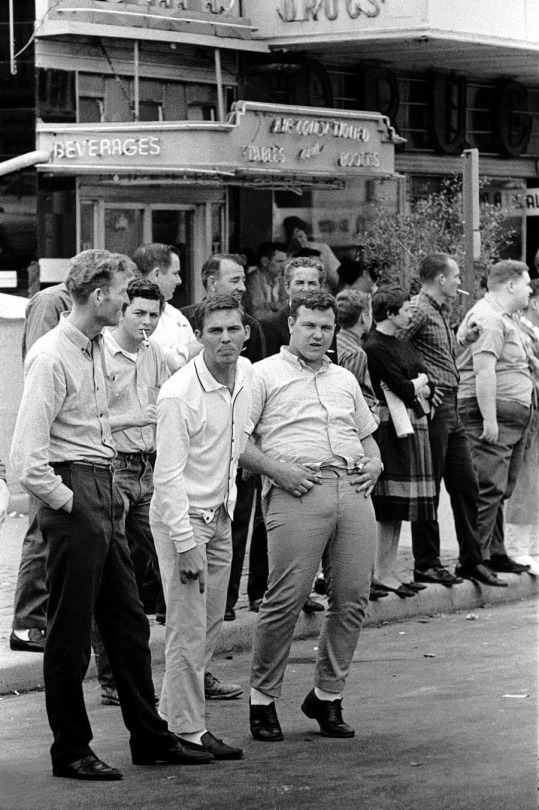
A few :"Boo's" from the crowd.
Selma, 1965
* * * * *
LETTERS FROM AN AMERICAN
March 7, 2021
Heather Cox Richardson
Black Americans outnumbered white Americans among the 29,500 people who lived in Selma, Alabama, in the 1960s, but the city’s voting rolls were 99% white. So, in 1963, Black organizers in the Dallas County Voters League launched a drive to get Black voters in Selma registered. The Student Nonviolent Coordinating Committee, a prominent civil rights organization, joined them.
In 1964, Congress passed the Civil Rights Act, but it did not adequately address the problem of voter suppression. In Selma, a judge had stopped the voter registration protests by issuing an injunction prohibiting public gatherings of more than two people.
To call attention to the crisis in her city, Amelia Boynton, who was a part of the Dallas County Voters League but who, in this case, was acting with a group of local activists, traveled to Birmingham to invite Reverend Martin Luther King, Jr., to the city. King had become a household name after the 1963 March on Washington where he delivered the “I Have a Dream” speech, and his presence would bring national attention to Selma’s struggle.
King and other prominent members of the Southern Christian Leadership Conference arrived in January to press the voter registration drive. For seven weeks, Black residents tried to register to vote. County Sheriff James Clark arrested almost 2000 of them for a variety of charges, including contempt of court and parading without a permit. A federal court ordered Clark not to interfere with orderly registration, so he forced Black applicants to stand in line for hours before taking a “literacy” test. Not a single person passed.
Then, on February 18, white police officers, including local police, sheriff’s deputies, and Alabama state troopers, beat and shot an unarmed 26-year-old, Jimmie Lee Jackson, who was marching for voting rights at a demonstration in his hometown of Marion, Alabama, about 25 miles northwest of Selma. Jackson had run into a restaurant for shelter along with his mother when the police started rioting, but they chased him and shot him in the restaurant’s kitchen.
Jackson died eight days later, on February 26. The leaders of the Southern Christian Leadership Conference in Selma decided to defuse the community’s anger by planning a long march—54 miles-- from Selma to the state capitol at Montgomery to draw attention to the murder and voter suppression. Expecting violence, the Student Nonviolent Coordinating Committee voted not to participate, but its chair, John Lewis, asked their permission to go along on his own. They agreed.
On March 7, 1965, the marchers set out. As they crossed the Edmund Pettus Bridge, named for a Confederate brigadier general, Grand Dragon of the Alabama Ku Klux Klan, and U.S. senator who stood against Black rights, state troopers and other law enforcement officers met the unarmed marchers with billy clubs, bull whips, and tear gas. They fractured John Lewis’s skull, and beat Amelia Boynton unconscious. A newspaper photograph of the 54-year-old Boynton, seemingly dead in the arms of another marcher, illustrated the depravity of those determined to stop Black voting.
Images of “Bloody Sunday” on the national news mesmerized the nation, and supporters began to converge on Selma. King, who had been in Atlanta when the marchers first set off, returned to the fray.
Two days later, the marchers set out again. Once again, the troopers and police met them at the end of the Edmund Pettus Bridge, but this time, King led the marchers in prayer and then took them back to Selma. That night, a white mob beat to death a Unitarian Universalist minister, James Reeb, who had come from Massachusetts to join the marchers.
On March 15, President Lyndon B. Johnson addressed a nationally televised joint session of Congress to ask for the passage of a national voting rights act. “Their cause must be our cause too,” he said. “[A]ll of us… must overcome the crippling legacy of bigotry and injustice. And we shall overcome.” Two days later, he submitted to Congress proposed voting rights legislation.
The marchers remained determined to complete their trip to Montgomery, and when Alabama’s governor, George Wallace, refused to protect them, President Johnson stepped in. When the marchers set off for a third time on March 21, 1,900 members of the nationalized Alabama National Guard, FBI agents, and federal marshals protected them. Covering about ten miles a day, they camped in the yards of well-wishers until they arrived at the Alabama State Capitol on March 25. Their ranks had grown as they walked until they numbered about 25,000 people.
On the steps of the capitol, speaking under a Confederate flag, Dr. King said: “The end we seek is a society at peace with itself, a society that can live with its conscience. And that will be a day not of the white man, not of the black man. That will be the day of man as man.”
That night, Viola Liuzzo, a 39-year-old mother of five who had arrived from Michigan to help after Bloody Sunday, was murdered by four Ku Klux Klan members tailing her as she ferried demonstrators out of the city.
On August 6, Dr. King and Mrs. Boynton were guests of honor as President Johnson signed the Voting Rights Act of 1965. Johnson recalled “the outrage of Selma” when he said "This right to vote is the basic right without which all others are meaningless. It gives people, people as individuals, control over their own destinies."
The Voting Rights Act authorized federal supervision of voter registration in districts where African Americans were historically underrepresented. Johnson promised that the government would strike down “regulations, or laws, or tests to deny the right to vote.” He called the right to vote “the most powerful instrument ever devised by man for breaking down injustice and destroying the terrible walls which imprison men because they are different from other men,” and pledged that “we will not delay, or we will not hesitate, or we will not turn aside until Americans of every race and color and origin in this country have the same right as all others to share in the process of democracy.”
But less than 50 years later, in 2013, the Supreme Court gutted the Voting Rights Act. The Shelby County v. Holder decision opened the door, once again, for voter suppression. Since then, states have made it harder to vote. And now, in the wake of the 2020 election, in which voters handed control of the government to Democrats, legislatures in 43 states are considering sweeping legislation to restrict voting, especially voting by people of color. Among the things Georgia wants to outlaw is giving water to voters as they wait for hours in line to get to the polls.
Today, 56 years after Bloody Sunday, President Biden signed an executive order “to promote voting access and allow all eligible Americans to participate in our democracy.” He called on Congress to pass the For the People Act, making it easier to vote, and to restore the Voting Rights Act, now named the John R. Lewis Voting Rights Act after the man who went on from his days in the Civil Rights Movement to serve 17 terms as a representative from Georgia, bearing the scars of March 7, 1965, until he died on July 17, 2020.
The fact sheet from the White House announcing the executive order explained: “democracy doesn’t happen by accident. We have to defend, strengthen, and renew it.” Or, as Representative Lewis put it: “Never, ever be afraid to make some noise and get in good trouble, necessary trouble.”
—-
LETTERS FROM AN AMERICAN
HEATHER COX RICHARDSON
#Letters from an American#Heather Cox Richardson#history#racism#Selma#Alabama#Civil Rights#Bloody Sunday#voting Rights#democracy
3 notes
·
View notes
Photo

Feb 26, 1965. Jimmie Lee Jackson Murdered.
"Who murdered Jimmie Lee Jackson? We know a state trooper acting under the orders of George Wallace pointed the gun and pulled the trigger, but how many other fingers were on that trigger? Every white lawman who abuses the law to terrorize! Every white politician who feeds on prejudice and hatred! Every white preacher who preaches the Bible and stays silent before his white congregation! Who murdered Jimmie Lee Jackson? Every Negro man and woman who stands by without joining this fight as their brothers and sisters are humiliated, brutalized, and ripped from this earth!" — Dr. Martin Luther King Jr.
Dr. King said this words at the funeral for Jimmie Lee Jackson, who died on Feb. 26, 1965, from injuries inflicted by police officers on the night of Feb. 18, 1965.
Jackson, a civil rights activist and a deacon in the Baptist church, was beaten and shot by state troopers in Marion, Alabama, during a peaceful voting rights march. He was unarmed. His death was the catalyst for the march from Selma to Montgomery just a month later. [Zinn]
3 notes
·
View notes